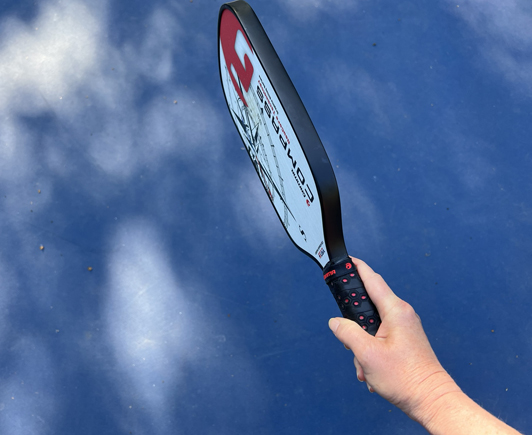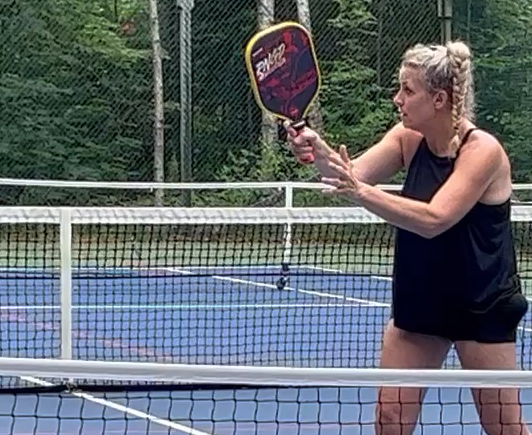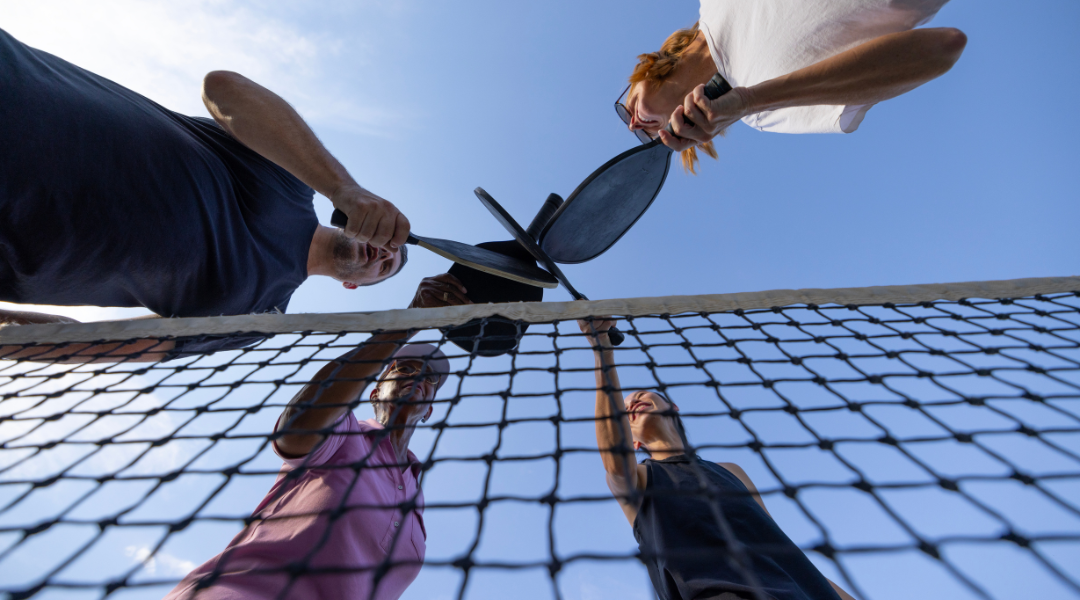This advice comes from many years of coaching and countless players I’ve worked with. People often ask, “What’s the quickest way to improve my game?” While I wish it were quick and simple, there are three essential things you must do. Think of it like lifting weights—if you only work on your legs, your upper body will be weak. Here are the essentials for improving your game:
If you neglect any one of these, you will stunt the growth of your game. If you are a player that feels stuck and can’t quite reach the next level, this guide is for you.


This starts with a proper ready position. It’s amazing how many people start off at a disadvantage due to an improper ready position. Here’s how to set up correctly:
Paddle hold: Use a continental grip (a basic handshake grip) with your hand not too high on the handle. Alternatively, you can use the “V” version of this grip, where your pointer finger points up on the back face of your paddle. Your opposite hand should be placed on the back of the paddle, not wrapped around the grip or on the top of the paddle. This position prepares you quickly for the next ball coming your way.
Ready Position: Use a continental grip (a basic handshake grip) with your hand not too high on the handle. Alternatively, you can use the “V” version of this grip, where your pointer finger points up on the back face of your paddle. Your opposite hand should be placed on the back of the paddle, not wrapped around the grip or on the top of the paddle. This position prepares you quickly for the next ball coming your way.
Following your shot: After hitting the ball, move immediately to follow your shot instead of waiting and reacting to the next ball. This proactive movement ensures you are in the right place at the right time. It also helps you and your partner know who is covering which part of the court, clearing up confusion on most middle balls.
Proper court coverage and positioning will help you stay prepared and reduce the time it takes to react to your opponent’s shots.
We all want to hit shots like the pros, but pros do things you might not notice that make their shots look effortless. These include:
Lining up the ball in the perfect strike zone: Imagine playing tee ball. You wouldn’t let a child stand too close or too far from the tee. Similarly, you need to position yourself, so the ball is in your perfect strike zone each time. This requires good footwork and anticipation. Over time, you’ll learn to adjust your positioning for different types of shots, like dinks or groundstrokes.
Using your entire body: Avoid being a “stop sign” in pickleball—don’t just stand with a wide base and move only your paddle to hit the shots. Use your whole body. For example, when hitting a ball, tilt your hips towards it. Imagine you have laser pointers on your hips, and they should highlight each ball you hit. This will help you use your entire body to generate power and accuracy.
Proper paddle position: Each shot in pickleball requires a different setup and follow-through. Your paddle face directs where the ball goes. For instance, when hitting a basic dink, you should position the ball slightly in front of you and off to your side, within comfortable reach. Take no backswing, keep your paddle face open and pointed at your target, and gently carry the ball to its destination without bending your wrist.
Mastering these body and stroke mechanics will make your shots more consistent and reliable, helping you play more effectively.
Now that you know how to position yourself and hit the ball with proper mechanics, the next step is learning the correct shot selection for different situations. Here are some basic tips:
By implementing this 3-pronged approach—covering the court effectively, using proper body and stroke mechanics, and making smart shot selections—you will see significant improvements in your game. This methodical approach ensures you are well-rounded and prepared for various situations on the court, helping you reach the next level of play.
Improving your pickleball game involves more than just playing more games or hitting more balls. It requires a structured approach focusing on court coverage, body, and stroke mechanics, as well as shot selection. By addressing these three areas, you will develop a more balanced and effective game. So, take these tips to heart, practice diligently, and watch as your skills and confidence on the court grow. Good luck and enjoy the journey to becoming a better pickleball player!

IPTPA Master level pickleball pro, aiming to enhance the skills of players globally by making the game more enjoyable, effective, and fun.
